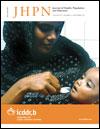Modelling of Infectious Diseases for Providing Signal of Epidemics: A Measles Case Study in Bangladesh
DOI:
https://doi.org/10.3329/jhpn.v29i6.9893Keywords:
Communicable diseases, Disease models, Disease outbreaks, Seasonal autoregressive integrated moving average model, Statistical process-control charts, BangladeshAbstract
The detection of unusual patterns in the occurrence of diseases is an important challenge to health workers interested in early identification of epidemics. The objective of this study was to provide an early signal of infectious disease epidemics by analyzing the disease dynamics. A two-stage monitoring system was applied, which consists of univariate Box-Jenkins model or autoregressive integrated moving average model and subsequent tracking signals from several statistical process-control charts. The analyses were illustrated on January 2000–August 2009 national measles data reported monthly to the Expanded Programme on Immunization (EPI) in Bangladesh. The results of this empirical study revealed that the most adequate model for the occurrences of measles in Bangladesh was the seasonal autoregressive integrated moving average (3, 1, 0) (0, 1, 1)12 model, and the statistical process-control charts detected no measles epidemics during September 2007–August 2009. The two-stage monitoring system performed well to capture the measles dynamics in Bangladesh without detection of an epidemic because of high measles-vaccination coverage.
DOI: http://dx.doi.org/10.3329/jhpn.v29i6.9893
JHPN 2011; 29(6): 567-573
Downloads
194
176

